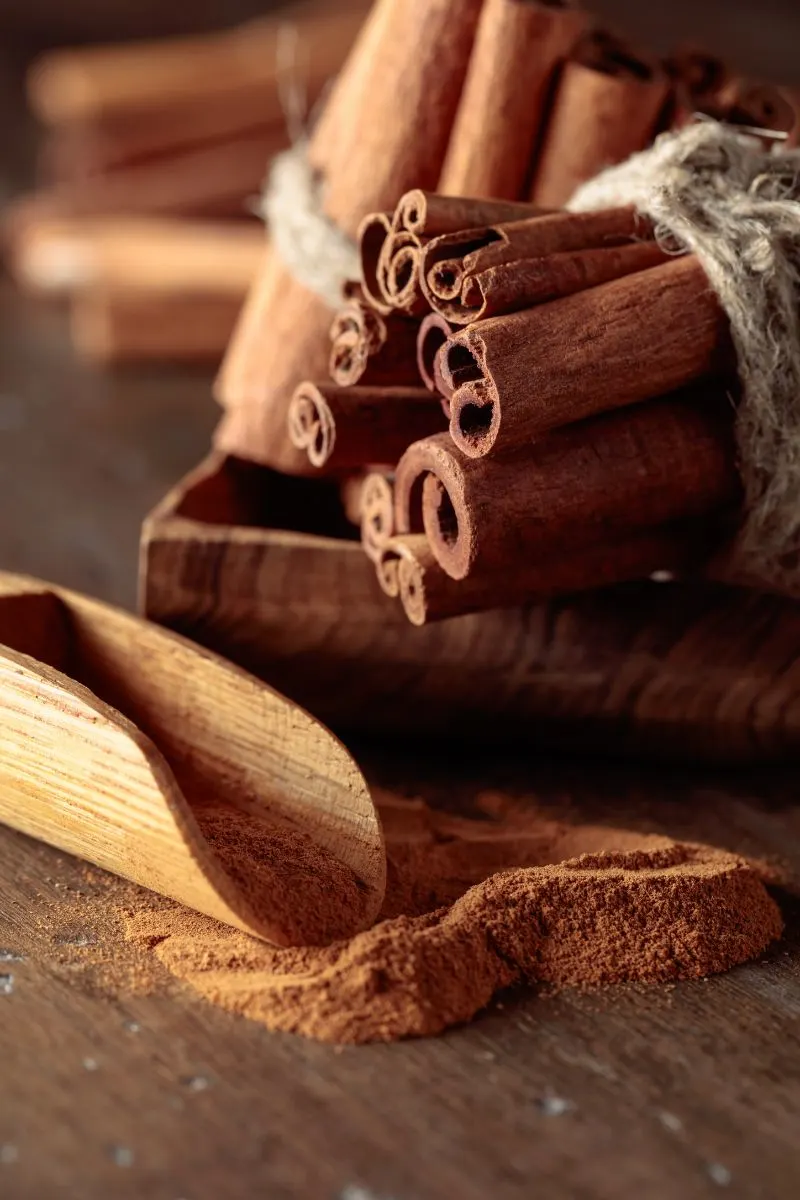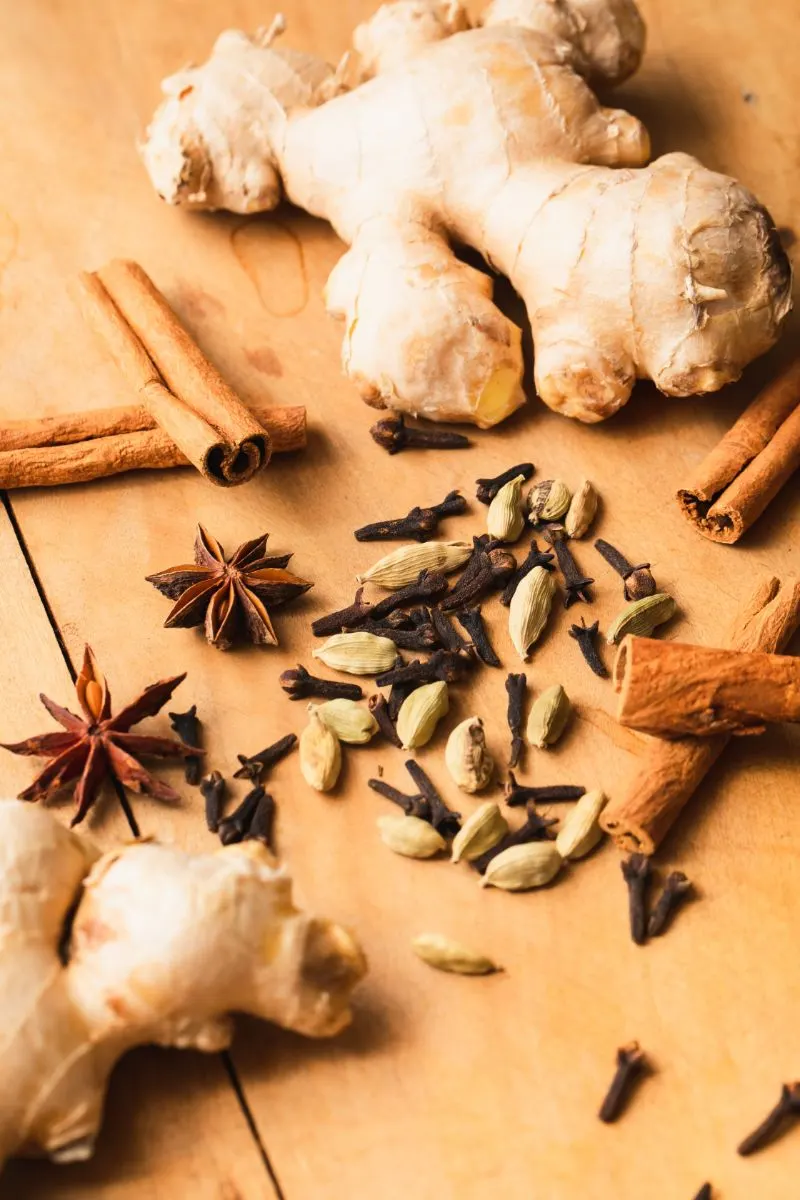Cinnamon, the aromatic spice that has warmed many a kitchen and heart, also carries a tale of caution within its sweet folds.
Most of us sprinkle it over our morning lattes or oatmeal without a second thought, but few ponder on the ancient spice’s lesser-known effects.
This article will explore the fascinating, often overlooked world of cinnamon’s side effects, weaving through historical anecdotes, scientific findings, and personal narratives to present a comprehensive view.
A Spoonful of History: Cinnamon’s Journey Through Time
Cinnamon, with its unmistakable aroma and sweet, warming flavor, has a history as rich and layered as its taste.
This spice, derived from the inner bark of trees belonging to the genus Cinnamomum, embarked on its global journey from the tropical forests of Southeast Asia, weaving through ancient civilizations, royal courts, and trade routes, to become a beloved ingredient in kitchens around the world.
The tale of cinnamon begins in the annals of ancient history, where it was so highly prized that it was considered a gift fit for monarchs and gods.
The ancient Egyptians, renowned for their intricate mummification processes, utilized cinnamon for its preservative qualities, owing to its potent antibacterial properties.
This was a time when spices were not just culinary agents but played pivotal roles in ceremonial rites and medicine.
Cinnamon’s value was such that it was often traded like currency and offered up in tribute to rulers and deities.
Moving forward in time, cinnamon found its way along the spice routes to ancient Rome.
Here, it was a symbol of wealth and luxury, burned as fragrant incense in temples and used as a flavoring in wines and the foods of the elite.
Its rarity and the mystery surrounding its origins added to its allure, with tales spun by traders to protect their valuable source.
They spoke of perilous journeys to distant lands, guarded by fierce creatures, to procure this coveted spice, thus inflating its worth and mystique.
By the Middle Ages, Europe’s appetite for cinnamon had grown, driven by the spice trade that flourished between the East and West.
It became a staple in the medicinal chests of the time, used in concoctions to treat a variety of ailments from coughs and sore throats to arthritis and indigestion.
Its use in medicine is a testament to its enduring appeal not just as a flavoring but as a compound believed to possess healing properties.
The Renaissance period saw cinnamon at the heart of exploration, as adventurers set sail to discover new worlds and direct trade routes to the spices of the East.
The Portuguese, Dutch, and finally the British Empire, all played parts in the cinnamon trade, establishing and losing monopolies over its supply.
These were times when control over spices like cinnamon could build fortunes and empires, leading to wars and conquests that shaped the course of history.
In modern times, cinnamon has shed much of its luxury status to become a common household spice, yet it retains an air of exoticism.
Its health benefits, long revered in ancient traditions, are being explored by contemporary science, offering promising insights into its potential anti-inflammatory, antioxidant, and antimicrobial properties.
Cinnamon’s transition from ancient tombs to modern tables, from a luxury item for the few to a beloved spice for the many, reflects its versatility and enduring appeal.
Its story is not just one of culinary delight but a fascinating chapter in the history of human civilization, illustrating our unbroken connection to the natural world and the complex interplay between culture, commerce, and the quest for wellness.
The Science of Spice: Understanding Cinnamon
Cinnamon, a spice that has seasoned both our palates and our history, owes its distinctive flavor and aroma to a fascinating array of compounds, chief among them being cinnamaldehyde.
This compound not only defines cinnamon’s sensory profile but also underpins many of its purported health benefits and side effects.
To fully appreciate the science behind this aromatic spice, it’s crucial to differentiate between its two main types: Ceylon cinnamon, often referred to as “true” cinnamon, and Cassia cinnamon, which is more commonly found in grocery stores.
Ceylon cinnamon hails from Sri Lanka and parts of India and is prized for its delicate flavor and lower coumarin content.
Coumarin is a natural substance found in several plant species, including the Cassia cinnamon tree.
While coumarin can add to the aromatic appeal of foods and cosmetics, it has been linked to potential negative health effects, especially when consumed in large quantities, highlighting the importance of distinguishing between the two cinnamon types.
Cassia cinnamon, on the other hand, is sourced from China, Indonesia, and Vietnam and contains significantly higher levels of coumarin. This has implications for those who consume cinnamon regularly, particularly in terms of liver health.
The European Food Safety Authority has highlighted excessive coumarin intake as a concern, leading to recommendations for moderation in consumption, especially of Cassia cinnamon.
The key component in cinnamon, cinnamaldehyde, is responsible for much of the spice’s powerful effects on health and metabolism. It has been studied for its antioxidant properties, where it combats oxidative stress, reducing the risk of chronic diseases.
Additionally, cinnamaldehyde exhibits anti-inflammatory qualities, potentially mitigating conditions such as arthritis and helping to manage blood sugar levels, which could explain cinnamon’s traditional use in diabetes management.
Beyond cinnamaldehyde, cinnamon is rich in other bioactive substances, including polyphenols. These compounds further bolster cinnamon’s antioxidant profile, making it one of the most potent antioxidants found in nature.
Such properties contribute to the spice’s overall health benefits, touching on everything from heart health to the preservation of cognitive function.
However, understanding cinnamon’s impact on health isn’t solely about recognizing its benefits. The same compounds that provide these benefits can also lead to adverse reactions in some individuals.
For example, while moderate amounts of coumarin contribute to cinnamon’s allure, excessive intake may pose risks.
Similarly, the very compounds that offer anti-inflammatory and antioxidant benefits might interact with medications or trigger allergies in sensitive individuals.
It’s a compelling reminder of the complex interplay between natural substances and the human body, underscoring the importance of balanced, informed consumption.
Cinnamon Side Effects
Cinnamon, while lauded for its aromatic appeal and myriad health benefits, is not without its shadows.
This revered spice, when consumed in moderation, can indeed be a boon to health, offering antioxidant support and anti-inflammatory benefits.
However, the narrative turns more cautionary with excessive consumption, where the very compounds that confer cinnamon’s health advantages can lead to undesirable side effects.
The primary concern with overindulgence in cinnamon, particularly the Cassia variety, centers around coumarin. Although a natural component of several plants, coumarin in high doses has been linked to liver toxicity and damage.
The body metabolizes coumarin into toxic substances that can harm liver cells, a risk that becomes significant with the consumption of large amounts of Cassia cinnamon.
This aspect is particularly concerning given the widespread and often indiscriminate use of cinnamon in foods, beverages, and dietary supplements.
Another side effect to consider is the potential for allergic reactions. For some individuals, exposure to cinnamon—whether through ingestion, inhalation, or skin contact—can trigger allergic responses.
These can range from mild, such as skin irritation or rashes, to more severe reactions like shortness of breath or anaphylaxis, particularly in those with pre-existing allergies or sensitivities.
Cinnamon’s potent bioactive compounds, while beneficial in many respects, may also interact with medications. For example, because of its effect on blood sugar levels, cinnamon could potentially enhance the action of diabetes medications, leading to hypoglycemia (low blood sugar).
Likewise, its blood-thinning properties might interact with anticoagulant drugs, increasing the risk of bleeding. Such interactions underscore the importance of consulting healthcare providers before integrating high doses of cinnamon or any supplement into one’s regimen, especially for those on medication.
In addition, while rare, excessive consumption of cinnamon has been documented to cause respiratory issues when inhaled in its powdered form.
The “cinnamon challenge,” a dangerous internet trend involving swallowing a spoonful of dry cinnamon powder without water, brought this risk to public attention. Inhaling cinnamon powder can lead to coughing, gagging, lung irritation, and even aspiration, which can cause significant damage to the lungs.
Digestive issues represent another potential side effect of excessive cinnamon consumption.
High amounts of cinnamon, especially in the form of supplements or oil, can irritate the lining of the mouth, stomach, and intestines, leading to symptoms like oral sores, heartburn, nausea, and indigestion.
Moderation in All Things: Guidelines for Cinnamon Consumption
While there’s no universally agreed-upon daily allowance for cinnamon, a general guideline suggests that 1/2 to 1 teaspoon (2-4 grams) of ground cinnamon per day is safe for most adults.
This range considers the potential coumarin content, particularly in Cassia cinnamon, which is higher than in Ceylon cinnamon.
For those with liver issues or on medication that affects the liver, erring on the side of caution with even lower amounts or opting for Ceylon cinnamon can be prudent.
Identifying High-Quality Cinnamon
The distinction between Ceylon and Cassia cinnamon is crucial when considering quality and safety. Ceylon cinnamon, true cinnamon, is lighter in color with a delicate, sweet flavor and low coumarin levels, making it the preferred choice for daily consumption.
Cassia cinnamon, though more common and less expensive, contains higher levels of coumarin. Identifying high-quality cinnamon involves:
- Checking Labels: Always read labels carefully. High-quality suppliers are transparent about the type of cinnamon they’re selling.
- Visual Inspection: Ceylon cinnamon sticks are thinner, more fragile, and have multiple layers of bark, as opposed to the thicker, harder single-layered Cassia sticks.
- Taste and Smell: Ceylon cinnamon has a milder, sweeter flavor and scent, which is less harsh than Cassia cinnamon.
Enjoying Cinnamon Safely
Incorporating cinnamon into your diet safely involves not just knowing how much to consume but also understanding the best ways to consume it. Here are a few tips:
- Diversify Usage: Instead of concentrating cinnamon intake in one meal, spread it out throughout the day in different dishes to enjoy its flavor without overdoing it.
- Opt for Whole Sticks: Using whole cinnamon sticks for infusions in teas or cooking allows for a subtle flavor infusion with lower risk of excessive coumarin intake compared to powdered forms.
- Consult Healthcare Providers: Before adding cinnamon as a supplement or in large doses for health purposes, consulting with healthcare professionals is crucial, especially for those with existing health conditions or who are pregnant.
Takeaway – The Delicate Balance of Enjoying Cinnamon
Cinnamon, with its rich history and aromatic allure, stands as a testament to nature’s complexity.
This spice, embraced by ancient cultures and modern kitchens alike, serves as a bridge between the culinary and medicinal worlds, offering a blend of flavor and health benefits that few other ingredients can match.
However, as we’ve explored, cinnamon’s gifts come with a caveat—the need for moderation and mindfulness in its consumption.
The dual nature of cinnamon, capable of conferring both delight and harm, underscores a broader lesson about the interplay between natural substances and human health.
It reminds us that even the most benign ingredients can wield unexpected power within our bodies, necessitating a thoughtful approach to their use. This balance is not a limitation but rather an opportunity to engage more deeply with what we eat and how it affects us, fostering a relationship with food that is as informed as it is indulgent.
Responsible consumption of cinnamon, characterized by an awareness of its different types and the appropriate quantities, offers a path to enjoying its myriad benefits.
From its potential to enhance metabolic health to its role in culinary traditions around the globe, cinnamon has much to offer—provided we approach it with respect for its potency.
This narrative invites not just caution but also curiosity.
It encourages us to explore the rich tapestry of flavors and health practices that have surrounded cinnamon throughout the ages, inspiring us to incorporate this spice into our lives in ways that are both safe and enriching. In doing so, we honor the legacy of cinnamon, ensuring that it continues to be a source of both pleasure and well-being.
In conclusion, our journey with cinnamon, from the ancient spice routes to the modern table, reflects a larger dialogue about the foods and spices we cherish. It is a dialogue marked by wonder at the natural world’s gifts and a commitment to engaging with that world responsibly.
With cinnamon, as with all things, we find beauty in balance, discovering in its sweet warmth a spice that enriches not just our meals but our understanding of health and heritage.
